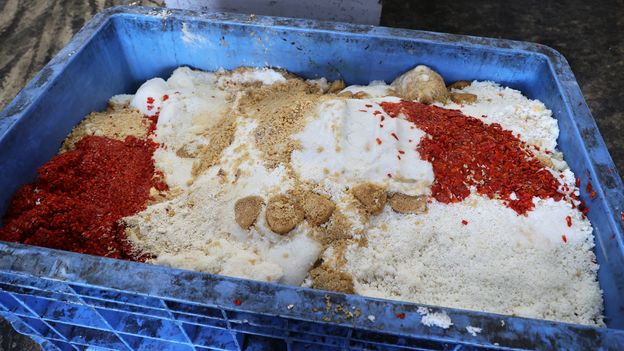…
Japan’s small size and mountainous terrain present challenges for food self-sufficiency. The country imports almost two-thirds of its food and three-quarters of its livestock feed. Yet each year, Japan throws out 28.4 million tonnes of food – much of it edible.
This comes with steep environmental and economic costs. Compared to many countries, consumers in Japan pay higher prices for food because so much of it is imported. And they also pay taxes to cover the majority of the 800bn yen (£4.2bn/$5.4bn) the country spends each year on waste incineration. Food makes up about 40% of the rubbish that Japan incinerates, and incineration produces significant air pollution and greenhouse gas emissions.
As the world’s fifth-largest emitter of greenhouse gases, Japan has set goals of cutting emissions by 46% by 2030 and becoming fully carbon neutral by 2050. Tackling food wastewill have to be a part of those efforts, Takahashi says.



That’s pretty cool. They say it produces good pork, I wonder how the pigs feel about it vs other feed.
They asked one of the pigs and it said it was OinK.
*buu buu
(they are Japanese picks and thus speak Japanese) ;)
deleted by creator
True, but the article says this like a liquid
If watching youtubers who raise hogs is any indication, anywhere between not caring at all to being enthused. Hogs are really not picky about their food for the most part and it’s not uncommon to add liquid to the feed in general.